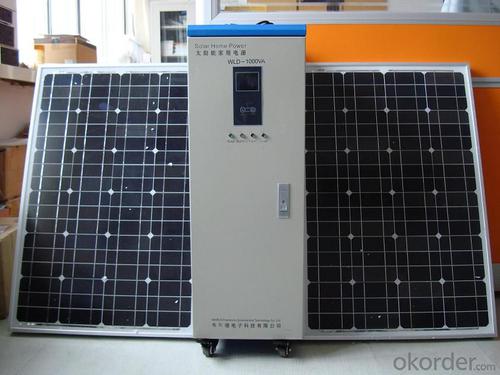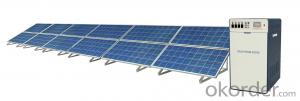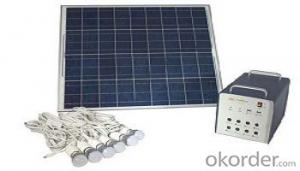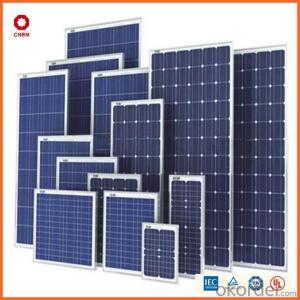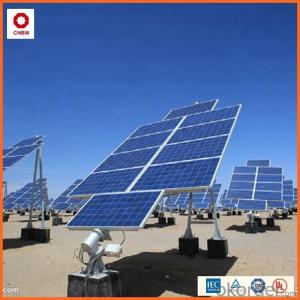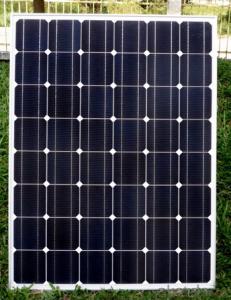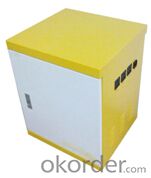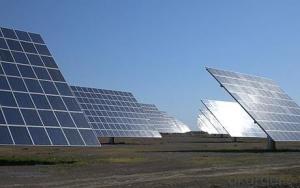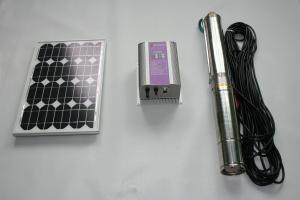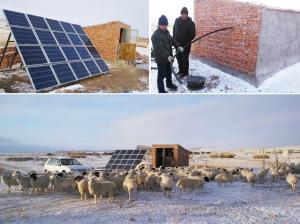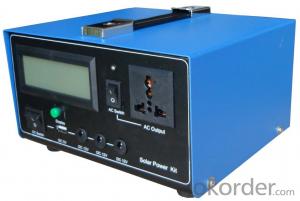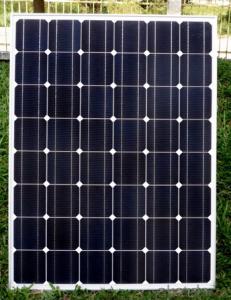Business Solar Energy Systems for Home Solar Power
- Loading Port:
- China Main Port
- Payment Terms:
- TT OR LC
- Min Order Qty:
- -
- Supply Capability:
- -
OKorder Service Pledge
Quality Product, Order Online Tracking, Timely Delivery
OKorder Financial Service
Credit Rating, Credit Services, Credit Purchasing
You Might Also Like
Specifications
3000w home solar power system/stand alone solar power system
1.10W7AH solar energy kit
1.Attachments:1x3W/12V LED Bulb*2, Phon
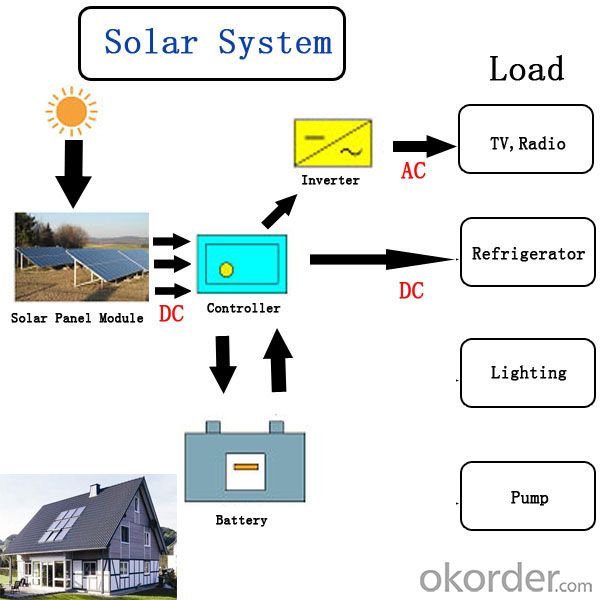
| Solar Panel | |||||||
| Type | T2-160W |
| |||||
| Rated Maximum Power | 160W | ||||||
| Maximum Power Voltage (Vmp) | 36V | ||||||
| Maximum Power Current (Imp) | 4.44 | ||||||
| Open Circuit Voltage(Voc) | 42.48V | ||||||
| Short Circuit Current(Isc) | 4.89 | ||||||
| Power Toerance | ±3% | ||||||
| Maximum System Voltage | 1000V | ||||||
| Operating Temperature | -40℃~+85℃ | ||||||
| Standard Test Conditions | AM1.5 100mW/cm2 25’C | ||||||
| Size | 1580*808*35MM | ||||||
| Weight | 16.5KG | ||||||
| Quantity | 8PCS | ||||||
| Controller | |||||||
| System voltage | 48V | Balance charge voltage | 58.4V±1% | ||||
| System current | 30A | Increase charge voltage | 57.6V±1% |
| |||
| No-load loss | <15mA | Discharge protection voltage | 44.4V±1% | ||||
| Solar energy input voltage | <100V | Discharge protection voltage | 51.2V±1% | ||||
| Over voltage protection | 66V | Work temperature | -25℃to+60℃ | ||||
| Over voltage recovery | 60V | temperature | -4.0mv/℃/2V | ||||
| Over-load, short circuit protection | 1.25 times rating current 30S;1.5 times rating current 10S overload current protection;≥3 times rating current short circuit protection | ||||||
| Inverter | |||||||
| Rated power | 3000W | ||||||
| AC input | Voltage | 140V-275VAC | |||||
| Input Frequency | 40~60Hz | ||||||
| Charge current | ≤10A | ||||||
| DC voltage range allowed | 48V | ||||||
| AC output | Voltage | 110V/220/230/240VAC±5% | |||||
| Frequency | 50/60HZ±0.5 | ||||||
| Wave from | Sine-wave | ||||||
| Inverter efficiency | 80-90% | ||||||
| Work environment | Working temperature | -25℃~+50℃ | |||||
| Relative humidity | <90%,no condensing | ||||||
| Altitude | <1 500m | ||||||
| noise | ≤40dB | ||||||
| Protection | Battery under-voltage protection, battery over-voltage protection, output overload protection, over-current protection, Overload 150%, 10 seconds | ||||||
| power box | 600*490*470 | ||||||
| Weight | 47kg | ||||||
| Battery |  | ||||||
| Nominal capacity | 120AH | ||||||
| Dimensions | 409*174*240mm | ||||||
| Weight Approx | 34kg | ||||||
| Quantity | 8pcs | ||||||
| Accessories |    | ||||||
| PV module mounting system | 3000*150*150*1set Weight:36KG | ||||||
| cables | 80M Weight:6.4KG | ||||||
| battery box | size:750*580*180 15KG | ||||||
| User manual | 1pcs | ||||||
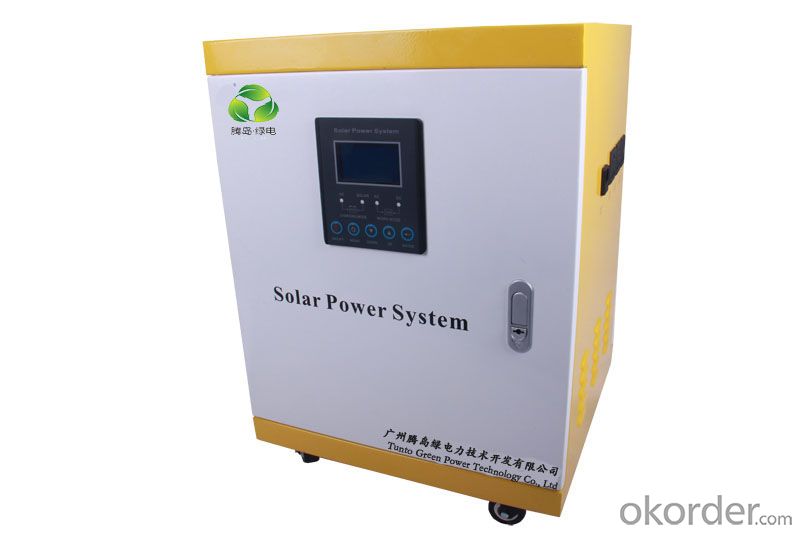
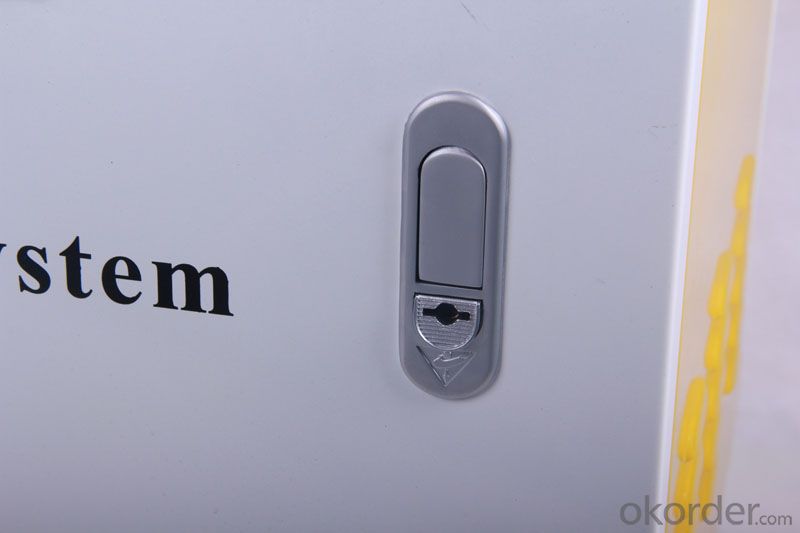
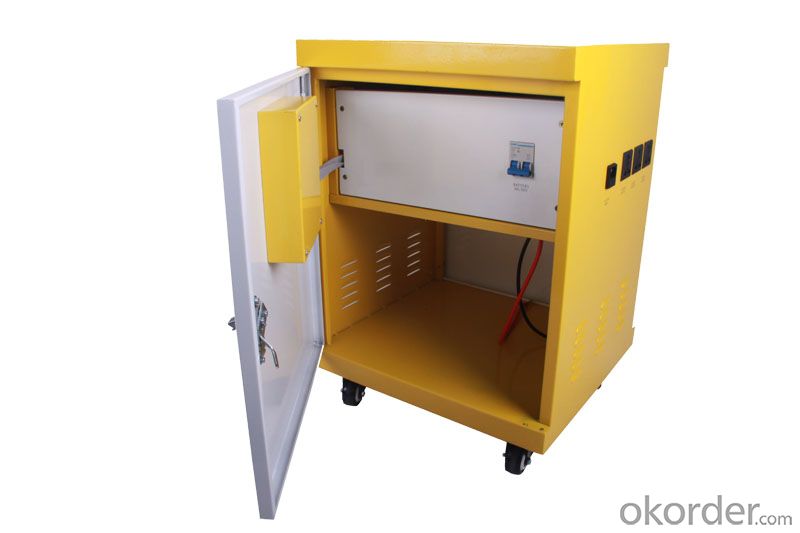
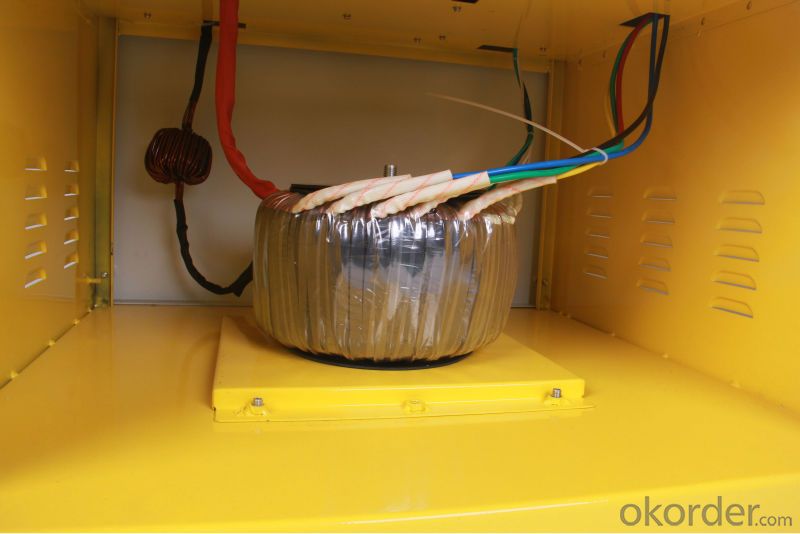
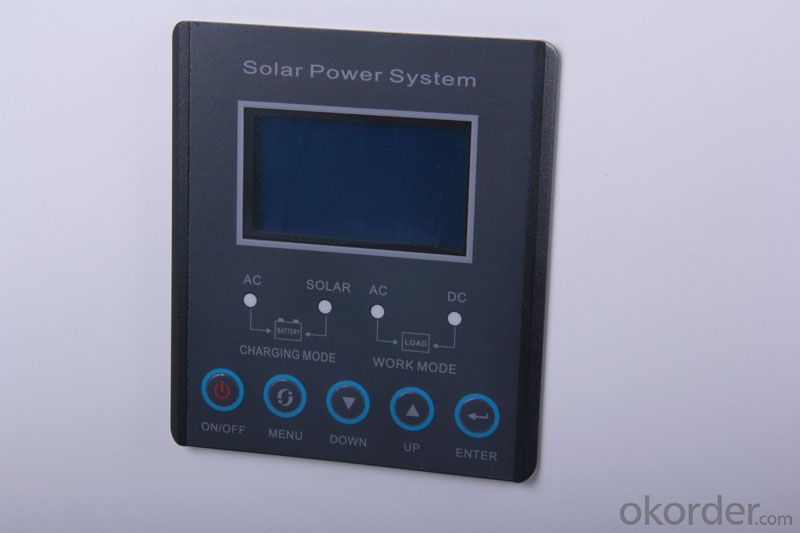
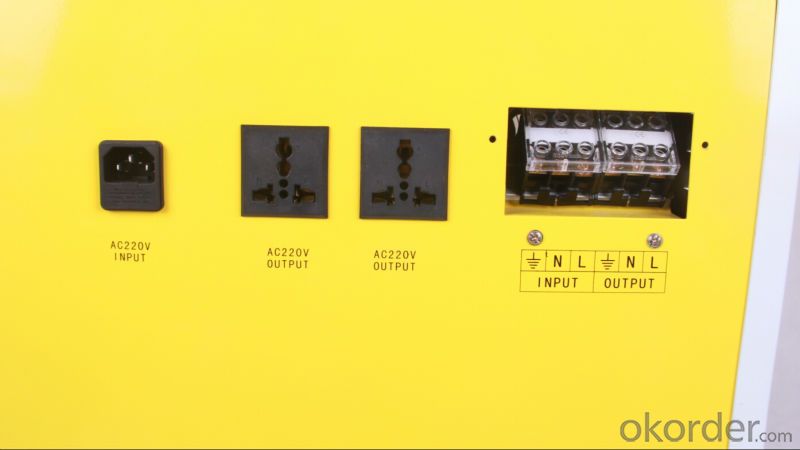
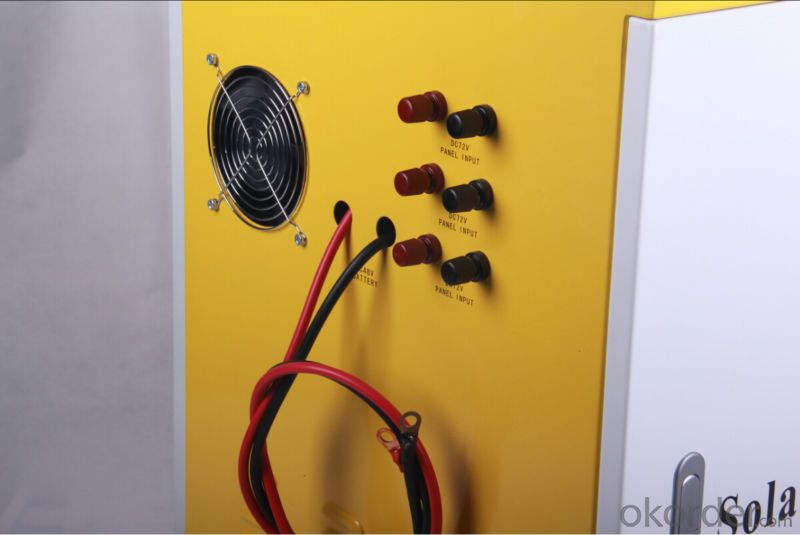
- Q: Are there any risks of electrical surges or voltage fluctuations with solar energy systems?
- Yes, there are potential risks of electrical surges or voltage fluctuations with solar energy systems. While solar panels themselves do not generate surges or fluctuations, the integration of solar energy systems with the existing electrical grid can create certain challenges. One risk is that sudden changes in sunlight intensity can result in voltage fluctuations. For example, when a cloud passes over a solar panel, the sudden decrease in sunlight can cause a drop in voltage output. Similarly, when the cloud passes, the sudden increase in sunlight can cause a surge in voltage output. These fluctuations can potentially affect the stability of the electrical grid. Another risk is related to the inverters used in solar energy systems. Inverters convert the direct current (DC) produced by solar panels into alternating current (AC), which is compatible with the electrical grid. Inverter failure or malfunction can lead to voltage fluctuations or surges, which can damage electrical equipment or disrupt the electrical supply. To mitigate these risks, solar energy systems are usually equipped with protective devices like surge protectors and voltage stabilizers. Surge protectors help prevent voltage spikes by diverting excess energy away from the system, while voltage stabilizers regulate voltage levels to ensure a steady and safe supply of electricity. Moreover, proper installation and regular maintenance of solar energy systems are crucial to minimize the risks of electrical surges or voltage fluctuations. Qualified professionals should handle the installation process, ensuring that all components are correctly connected and grounded. Routine inspections and maintenance checks can help identify and address any issues before they escalate into serious problems. Overall, while solar energy systems offer numerous benefits, it is important to be aware of and address the potential risks associated with electrical surges or voltage fluctuations. By implementing appropriate protective devices, following proper installation and maintenance procedures, and working with qualified professionals, these risks can be effectively managed, ensuring the safe and reliable operation of solar energy systems.
- Q: Can solar energy systems be used in powering research laboratories or scientific facilities?
- Certainly, research laboratories and scientific facilities can utilize solar energy systems to provide power. Solar energy is a sustainable and renewable power source that can be harnessed through the utilization of photovoltaic (PV) panels or solar thermal systems. To power various equipment such as microscopes, spectrometers, centrifuges, and other specialized scientific instruments, research laboratories and scientific facilities often require a substantial amount of electricity. By installing solar panels on the roofs or surrounding areas of these facilities, they can generate electricity from sunlight. The electricity generated by solar panels can directly power the laboratory's equipment, reducing their dependence on traditional fossil fuel-based electricity sources. Furthermore, any excess energy produced by the solar panels can be stored in batteries or returned to the grid, ensuring a continuous and reliable power supply. Using solar energy in research laboratories and scientific facilities offers several advantages. Firstly, it helps diminish greenhouse gas emissions and mitigates the environmental impact of these facilities. Solar power is clean and does not generate harmful pollutants, making it an environmentally friendly substitute for conventional electricity sources. Additionally, solar energy systems can provide a stable and cost-effective power source in the long term. While the initial installation costs may be higher, solar panels have a lengthy lifespan and require minimal upkeep. This can result in significant savings on electricity bills over time, enabling research laboratories and scientific facilities to allocate their resources towards other essential research activities. Moreover, solar energy systems can enhance the resilience and reliability of power supply to these facilities. In regions prone to power outages or with unreliable electricity grids, solar panels combined with battery storage can serve as a backup power source, guaranteeing uninterrupted operation of critical scientific equipment. In conclusion, solar energy systems can indeed be utilized to power research laboratories and scientific facilities. They offer numerous environmental, economic, and operational advantages, making them a feasible and sustainable choice for meeting the energy requirements of these vital scientific institutions.
- Q: Can solar panels be installed on uneven or sloped surfaces?
- Yes, solar panels can be installed on uneven or sloped surfaces. Mounting systems can be used to adjust the angle and position of the panels to ensure optimal sunlight exposure, even on irregular terrain.
- Q: What is the role of solar batteries in storing excess solar energy?
- The role of solar batteries in storing excess solar energy is to capture and store the energy generated by solar panels during periods of high sunlight. These batteries allow for the energy to be stored and used at a later time, such as during the night or on cloudy days, ensuring a continuous supply of electricity from solar power even when the sun is not shining.
- Q: How does the installation of solar panels affect the roof's warranty?
- The installation of solar panels typically does not void the roof's warranty. However, it is important to consult with the roofing manufacturer and installer to ensure that the installation process does not breach any warranty conditions.
- Q: Can solar energy systems be used for powering medical equipment in remote areas?
- Yes, solar energy systems can be used for powering medical equipment in remote areas. Solar power is a reliable and sustainable source of energy that can be harnessed to generate electricity for operating medical equipment even in areas with limited or no access to the electrical grid. This is particularly crucial in remote areas where infrastructure and power supply may be inadequate. Solar energy systems can provide a cost-effective and environmentally friendly solution, ensuring that essential medical equipment is powered and healthcare services can be delivered effectively.
- Q: How does the quality of solar panels affect their performance?
- The quality of solar panels plays a crucial role in determining their performance. High-quality solar panels are designed and manufactured using advanced technology and materials, which directly impacts their efficiency, durability, and reliability. Efficiency is one of the key factors affected by the quality of solar panels. High-quality panels are built with superior materials and advanced manufacturing techniques, allowing them to convert sunlight into electricity more efficiently. This means that they can generate more electricity from the same amount of sunlight compared to lower-quality panels. Durability is another important aspect influenced by the quality of solar panels. High-quality panels are designed to withstand harsh weather conditions, such as extreme temperatures, strong winds, and heavy snow loads. They are also less prone to degradation, ensuring a longer lifespan and consistent performance over time. Reliability is closely tied to the quality of solar panels. High-quality panels are built to last, reducing the chances of malfunctions or breakdowns. They undergo rigorous testing and quality control processes to ensure that they can consistently deliver their rated power output for many years. Additionally, high-quality solar panels often come with industry-leading warranties, providing peace of mind to the owners. These warranties cover defects, performance issues, and other potential problems, ensuring that customers receive support and replacements if needed. In summary, the quality of solar panels significantly impacts their performance. Investing in high-quality panels can lead to higher energy production, increased durability, and improved reliability, ultimately resulting in better returns on investment and a more sustainable energy solution.
- Q: Can a solar energy system be installed on a building with a flat roof?
- Certainly, it is possible to install a solar energy system on a building that has a flat roof. Actually, when it comes to solar panel installations, flat roofs are often preferred due to their accessibility and ideal exposure to sunlight. By utilizing a weight-based system called ballast, solar panels can be directly mounted on the flat surface of the roof without the need for any roof penetrations. Moreover, flat roofs offer abundant space to arrange the solar panels in an optimal way, thereby maximizing energy production. Consequently, flat roofs serve as an outstanding choice for the installation of solar energy systems and can make a significant contribution to the generation of clean and sustainable electricity.
- Q: Are there any risks of electrical shock with solar energy systems?
- Solar energy systems carry potential risks of electrical shock. While generally considered safe, these systems can be hazardous due to the presence of high voltages and electrical currents. Failure to handle or manage them properly can result in accidents. Several key risks are associated with solar energy systems: 1. Installation and maintenance: Improper procedures during the installation and maintenance of solar panels can lead to contact with live electrical components. This can happen when safety protocols are not followed or when untrained individuals attempt to handle electrical connections. 2. Equipment or wiring malfunctions: Defective inverters, wiring, or other equipment can increase the risk of electrical shock. Poor installation practices or insufficient maintenance can also result in electrical faults, exposing individuals to dangerous currents. 3. Fire hazards: While not directly related to electrical shock, faulty electrical components or wiring can raise the risk of fires in solar energy systems. Attempting to extinguish such fires without shutting down the electrical system first can further worsen the risk of electrical shock. To minimize these risks, it is essential to adhere to proper installation and maintenance procedures. This often involves seeking assistance from licensed professionals. Furthermore, individuals working with solar energy systems should be trained in safety protocols, including the use of appropriate personal protective equipment and ensuring proper grounding of electrical systems. Regular inspections and maintenance are also crucial to detect and address any potential electrical hazards.
- Q: Are solar energy systems suitable for all locations?
- No, solar energy systems are not suitable for all locations. The feasibility and efficiency of solar energy depend on various factors such as the amount of sunlight received, the availability of space for installing panels, and the local climate. Regions with low sunlight or frequent cloudy weather may not be ideal for solar energy systems. Additionally, areas with limited space or high levels of shading may also face challenges in harnessing solar power effectively.
Send your message to us
Business Solar Energy Systems for Home Solar Power
- Loading Port:
- China Main Port
- Payment Terms:
- TT OR LC
- Min Order Qty:
- -
- Supply Capability:
- -
OKorder Service Pledge
Quality Product, Order Online Tracking, Timely Delivery
OKorder Financial Service
Credit Rating, Credit Services, Credit Purchasing
Similar products
Hot products
Hot Searches
Related keywords



